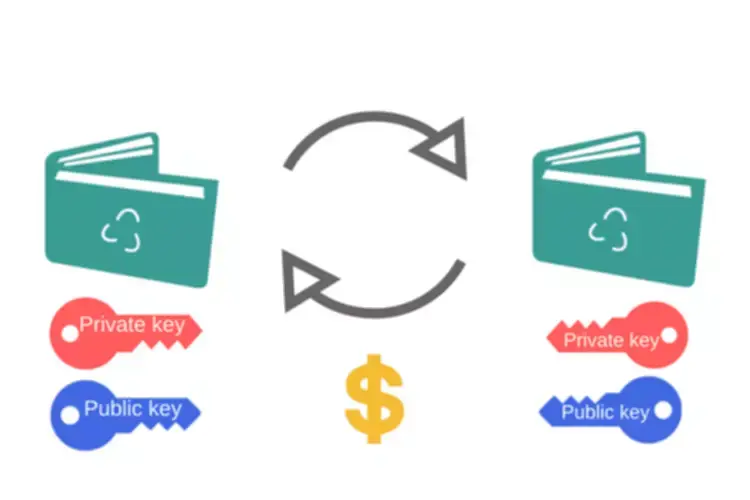Like a bank account routing number, your public key is shared so that folks can ship you cash. Stay updated with our newest change critiques, promotions, how-to guides and educational articles on Bitcoin, cryptocurrency & extra. Then follow the instructions below to ship crypto from Phantom Wallet to your Trust Wallet. Then comply with the instructions under to send crypto from Coinbase Wallet to your Trust Wallet.
Block Time: **10-30 Minutes**

Instead, they’re a series of verified transactions on the blockchain, starting with the initiation from a wallet, continuing through the mempool, and concluding with mining and confirmations for finality. Finally, it’s essential to verify you’re taking the mandatory security measures to guard your funds. This contains making certain that your pockets is secure and shielded from hackers, as properly as ensuring you’re not sending funds to an unverified or untrustworthy wallet. Additionally, it’s important to make sure you’re using the right handle when sending funds, as sending funds to the mistaken tackle can result in delays or a total loss of funds.
Custodial wallets, similar to those supplied by exchanges, typically batch transactions to save lots of on fees. Switching to a non-custodial wallet may give you greater control over your transactions and allow for sooner processing. Miners prioritize transactions with greater fees since these are their primary source of income. To avoid being caught within the mempool, set a aggressive transaction payment, particularly during times of excessive exercise.
Set Competitive Transaction Fees
On the opposite hand, custodial wallets managed by exchanges or third parties might have standardized payment constructions, which might delay processing during community congestion. Litecoin’s shorter transfer time has positioned it as a popular option not just for people in search of quick transactions but additionally for these in search of a reliable cryptocurrency with established credibility. While Litecoin shares many similarities with Bitcoin, its quicker switch occasions and improved scalability make it a gorgeous choice https://www.xcritical.com/ for customers who prioritize effectivity of their cryptocurrency transactions. Litecoin, often referred to as the “lite” version of Bitcoin, presents faster switch times in comparability with its predecessor. Understanding the transfer time of Litecoin transactions can give you insights into its effectivity and suitability for your cryptocurrency transfers. By bearing in mind these factors and staying informed concerning the present state of the Ethereum network, you can optimize the speed and effectivity of your Ethereum transfers.
Regardless of how long a transaction might sometimes tackle ChangeNOW, you cannot lose your tokens. This is as a end result of ChangeNOW is a non-custodial exchange, unlike another exchanges that you may be acquainted with. When exchanging crypto on ChangeNOW, prospects can happily count on this to take something from 2 to twenty minutes, half an hour at most. Understanding their implications will provide a clearer picture of why Bitcoin transactions take the time they do.
This relatively longer block confirmation time in Bitcoin is as a result of how long does it take to transfer crypto decentralized nature of the community and the complicated mathematical calculations performed by miners to validate transactions. Bitcoin’s transaction speed can differ between 10 minutes and 1 hour relying on the number of confirmations required to validate each block on the community. Based on the current median affirmation time, the typical time to finish a single Bitcoin affirmation is approximately eleven minutes. Therefore, a successful Bitcoin switch to another pockets can take between 30 and 60 minutes to be confirmed on the blockchain network.
Coinbase’s verification ranges typically include Level 1, Level 2, and Level 3, every requiring increasing ranges of private information and id verification. Level 1 verified accounts, requiring basic info like email and telephone verification, have the most restrictive withdrawal limits. These limits are typically within the vary of some thousand dollars USD equal per day or less. Level 2 verified accounts, requiring the submission of government-issued ID, have significantly greater withdrawal limits, typically reaching tens of 1000’s of dollars USD equivalent per day.
Non-custodial wallets, which give users full management over their non-public keys, often provide more flexibility for setting fees and adjusting priorities. On the opposite hand, custodial wallets managed by third-party companies, like exchanges, usually set default fees, which might not always align with the current network conditions. Under normal circumstances, a Bitcoin transaction takes about 10 minutes to an hour to finish. This timeframe is basically determined by the network’s requirement for block confirmations. Each confirmation represents a brand new block added to the blockchain, validating your transaction.

The time it takes to send Bitcoin is dependent upon a quantity of elements, together with network congestion and the transaction charge you select. During periods of excessive demand, like when Bitcoin prices spike, the mempool may turn into crowded, resulting in delays. Conversely, quieter instances can lead to sooner transactions, even with lower charges.

Let’s see how these calculations occur inside the network and how they contribute to the Bitcoin mining process. Sidechains are separate blockchains linked to the principle blockchain, providing faster and extra efficient transactions. By transferring a portion of the transactions to a sidechain, the main blockchain is relieved of congestion, resulting in quicker transfers and decrease fees. Layer 2 scaling solutions, such as the Lightning Network for Bitcoin and the Raiden Network for Ethereum, aim to enhance transaction throughput and reduce fees. By enabling off-chain transactions, these solutions can significantly improve the speed of crypto transfers.
- A Bitcoin transaction is confirmed when it’s recorded on the blockchain and acknowledged by a enough variety of additional blocks.
- It’s essential to note that whereas these average block affirmation times provide a general thought of the pace of each cryptocurrency, the actual time it takes for a particular transaction to be confirmed can differ.
- Remember to conduct thorough analysis and perceive the specific dynamics of each cryptocurrency network you’re dealing with.
In fact, bitcoin transactions are subject to delays ranging from a few minutes to a few days. Transactions are usually lumped into “blocks,” to be verified and added to the basic public blockchain; according to commonplace bitcoin protocol, it takes about ten minutes to mine one block. Batching involves combining a number of transactions right into a single one, which reduces the whole transaction measurement. This method is often used by exchanges and businesses that course of numerous transactions. By batching transactions, they can save on transaction charges and velocity up the general transfer course of. A bigger transaction measurement sometimes requires more computational energy and time to process, leading to longer affirmation times.
For example, even if a user has a every day restrict of $50,000 USD equal, they might be subject to a per-transaction restrict of $10,000 USD equal. This means they would want to provoke a quantity of withdrawal transactions to withdraw the full $50,000, with every transaction being capped at $10,000. Per-transaction limits serve as an extra layer of security, additional fragmenting large potential outflows and making it harder for illicit actors to maneuver substantial sums of cryptocurrency quickly.
Once a transaction is submitted, the standing of a transaction can also be followed using an Ethereum blockchain explorer. For instance, a person sending frequent small payments can leverage the Lightning Network to avoid delays and high charges. As adoption of this know-how will increase, it guarantees to revolutionize Bitcoin’s use for on an everyday basis funds. The Lightning Network is a game-changing answer designed to handle Bitcoin’s scalability challenges. Operating as a layer-2 answer, it enables off-chain transactions, significantly lowering the load on the principle blockchain. By creating fee channels between users, the Lightning Network permits them to conduct multiple transactions without having Proof of work to report each one on the blockchain.
